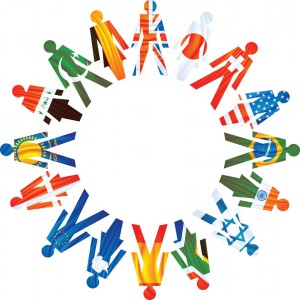As a full-service agency, we’ve often worked with clients that maintain a global reach or desire to cross borders for the first time. Cross-cultural businesses require a high level of tact and know-how. I’ve been working in the Multicultural marketing arena for over 20 years now, the majority of that being with Hispanic audiences. Today, I’ll share some insight into the cultural side of building an international website, and next week my colleague Eric Doolan will tackle the same topic from a design perspective.
If you’re building a website for users in another country, here some basics you’ll need to take into consideration.
It starts with communication and ends with the user
This is your new mantra. International communications can get confusing very quickly and it is paramount that your designers, developers, content writers, projects managers, and everyone else are on the same page.
A qualified team is one that approaches every decision with thoughtfulness and discretion. It’s important that the team knows at least a little about the culture and country that they’re developing/designing for. This goes beyond language and requires thinking about the end user from their perspective, not yours. It’s all about how (and if) the user will understand and interact with the site, and if the user is a line worker, a lower level assistant, or an engineer.
Every country requires its own research and content
Creating an international website is really creating several related websites that carry the same information through very different presentations. One of the foremost considerations, after translation, is image choice. A picture might look great to an American audience, but how will it resonate to another culture, on another continent? Be especially conscious of photos containing people. Will your target audience relate to them? Do your images reflect the cultural norms in regards to gender roles, clothing, and body language?
A one-size-fits-all approach will not work when it comes to the content of the website. Be prepared to research what resonates with each audience and to assemble content that follows those findings.
Translate for clarity
Clear translation isn’t just necessary, it’s the heart of an international site. It’s important to keep in mind that language is a tactic, not a strategy. In other words, it’s only a part of the translation’s bigger goals. It’s important to research and consult with someone who has strong expertise in the language and culture you’re working with. Otherwise, it’s pretty easy to spot poor attempts at communicating, especially if it’s a professional audience that you’re addressing.
Let’s face it: if Google Translate really got the job done and was effective, we’d probably all be using it. But a machine can’t capture the cultural associations of the ways a language can be manipulated – or even make grammatically accurate sentences. Think back on all the times you’ve read straight translations in manuals, directions, etc. It can be a bit confusing and comical.
However, this doesn’t mean you need to be a native speaker to translate, but ideally you should work with someone who is. Proofing the content is as important as writing it. But keep in mind that if budget is an absolute issue; and as long as the text is understandable, readers can be forgiving on lack of eloquence. The reader wants information, not necessarily poetry. Still, it’s important to do the best you can, and keep your audience in mind. When you have the finished product, always make sure it’s proof read by a professional.
Target your audiences with portals
It’s also important to keep in mind which audience(s) you’re targeting when creating an international site. One example could be a sports related site whose focus is reaching fans and everyday consumers in Latin America. But if the site also needs to reach a corporate audience, that’s B2B and is going to require a different tone than the fans. Reaching sports fans will be casual and may incorporate slang usage. On the other hand, this probably isn’t how you want to reach a corporate audience.
This would require a web portal as part of the solution. Here in the US, we use them knowingly, yet they’re often overlooked in their international counterparts. A good professional writer can write and translate in the appropriate tone for your audience.
Conclusion
It all starts and ends with your audience in mind. Who are you addressing? Again, your new mantra should be “It starts with communication and ends with the user.”
Be clear and effective, have a good idea about the culture you’re addressing. It’s important to have a professional writer/translator/proofreader who knows (or can learn) about the culture, then write and proof in that context.
Remember, it’s not about you. It’s all about your audience. Talk to them in a manner that they understand and can take action on. After all, that’s why you’re building a site, right?





